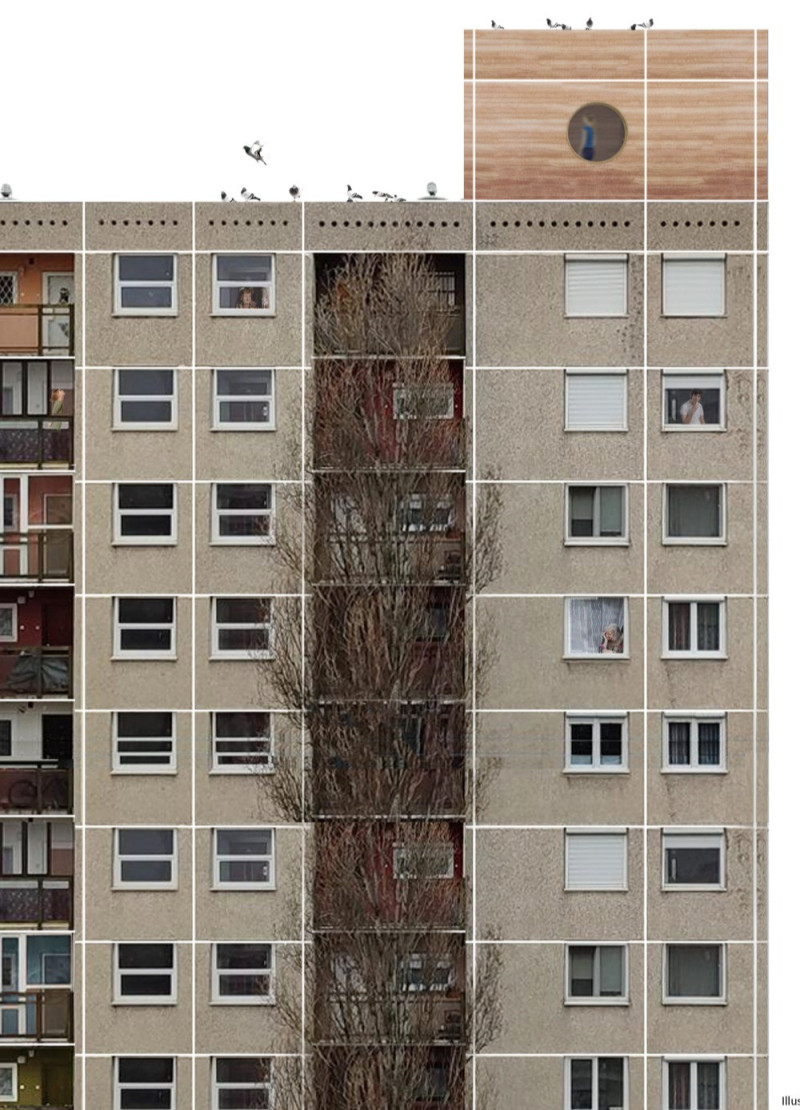5 key facts about this project
The Rammed Cap Pavilion is a modular structure designed to be placed on top of prefabricated concrete panel blocks. It resides in a residential area and serves as both an indoor gathering space and an outdoor garden. The design focuses on the innovative use of rammed earth, aiming to present this traditional material as a modern choice for building in urban environments.
Design Concept
The pavilion highlights rammed earth, a material rich in history but often overlooked in current architecture. By reintroducing it into contemporary design, the pavilion challenges conventional views and shows the flexibility of rammed earth as a suitable option for today's construction needs. This shift emphasizes the material's sustainability and relevance in modern building practices.
Spatial Arrangement
The layout of the pavilion is carefully designed to reflect the structures below it, creating a visual connection with the surroundings. The floorplan is organized in a way that not only aligns with the existing buildings but also takes into account the specific characteristics of rammed earth. This attention to detail not only enhances the aesthetic coherence but also ensures that the space is functional for its intended uses.
Material Choice
Rammed earth is the main material used in the pavilion. It is chosen for its benefits, such as low energy use in production, excellent thermal properties, and natural airflow. These features make it a sustainable choice. The texture and natural colors of rammed earth express a link to the environment, giving the pavilion a distinct character. Its use within the project serves to bridge the gap between traditional building methods and contemporary architectural demands.
Community Engagement
Situated in a neighborhood, the pavilion encourages community interaction and conversation about current housing and urban issues. It invites local residents to explore the space and engage with its artistic elements. This emphasis on community highlights the role of architecture in enhancing social connections and providing opportunities for public discourse about the environment and living conditions.
The rammed earth walls of the pavilion exhibit various textures and tones, subtly changing with the daylight. This creates a unique atmosphere, inviting visitors to appreciate the subtle beauty of the material and the interplay of light throughout the day.



















































